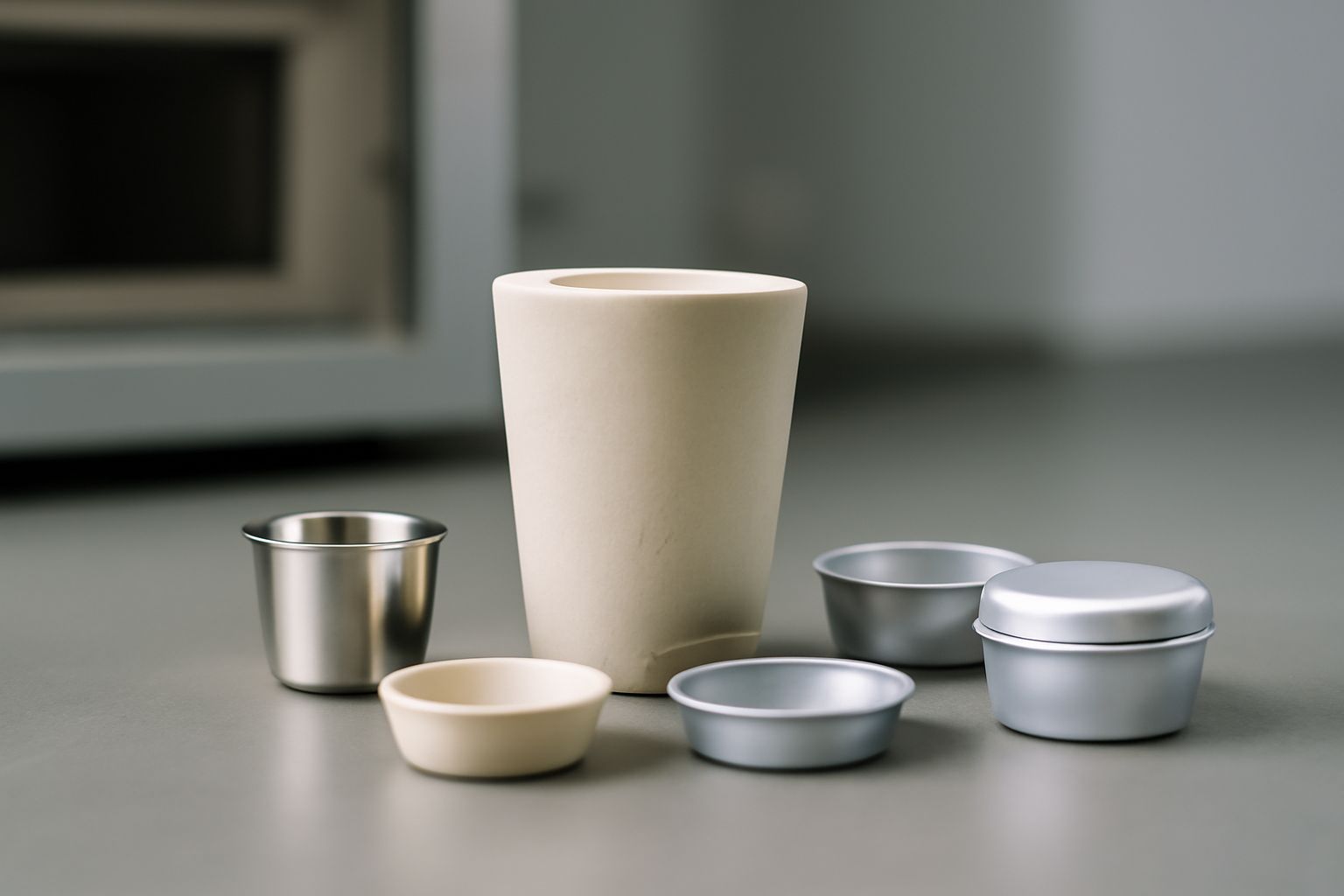Your cart is empty.
shop now
Your cart is empty.
shop now
Picking the wrong crucible for testing can ruin samples and give false results. Each test scenario has unique demands on temperature, material, and performance.
Choosing the best high-temperature crucible depends on your specific test—using platinum, alumina, sealed, or aluminum pans based on TGA, DSC, aerospace, polymer, or environmental testing needs.

I have helped labs troubleshoot failed tests simply by picking the right crucible for each application. Let’s go through what works best for different thermal analysis and high-performance testing environments.
TGA and DSC instruments each test materials differently—using the wrong pan can lead to data errors or damage your equipment.
For TGA, platinum or sealed crucibles handle weight loss and volatile samples under high heat, while for DSC, high-purity aluminum gives fast thermal responses ideal for phase changes and enthalpy.
In my lab, I use platinum or ceramic for TGA up to 1600°C, so samples don’t react with pans or escape. Sealed pans also help for liquids or volatiles. For DSC, anodized aluminum is perfect for standard analysis because it heats quickly and evenly. Table below compares requirements:
| Test Type | Recommended Crucible | Max Temp (°C) | Main Benefit | Reference |
|---|---|---|---|---|
| TGA | Platinum, Sealed Alumina | 1600 | Stable, clean, for mass-loss studies | OEM datasheet |
| DSC | High-purity Aluminum | 650 | Fast thermal transfer, uniformity | Aluminum |
Picking pans that match the heating profile and test style for each device keeps results stable and error-free.
High-performance aerospace tests need crucibles that withstand high cycling, extreme heat, and strict contamination limits.
Platinum and high-density alumina are best for aerospace because they tolerate high thermal shock, resist chemical attack, and last many runs under abrasive samples or rapid cycling.
I use platinum pans for near-vacuum and extreme-tolerance aerospace samples due to their unmatched stability. Alumina comes next, especially for large ceramic matrix or composite parts testing. Here is a summary of aerospace needs:
| Sample Type | Best Crucible | Key Requirement | Durability | Extra Guide |
|---|---|---|---|---|
| Superalloy/Inconel | Platinum | Non-reactive, high-purity | Excellent | OEM reference |
| Ceramic composites | High-density Alumina | Thermal shock, stability | Very good | Aerospace handbook |
| Titanium alloys | Sealed Alumina | No gas exchange | Good | App note |
Choosing between platinum and alumina depends on your test temperature, sample reactivity, and budget.
Polymers can degrade, melt, or release volatile compounds—even small issues with the crucible can affect readings or leave residue.
Sealed alumina or platinum crucibles are best for high-temperature polymer analysis; they keep samples stable and reduce contamination by blocking oxygen and preventing mass loss.
In my work testing polymer blends and specialty plastics, I pick sealed pans for volatiles and platinum when looking for complete inertness. Unsealed pans can let light molecules escape, which damages accuracy. Table gives a practical guide:
| Polymer Test | Crucible Type | Benefit | Protects Against | Reference |
|---|---|---|---|---|
| Thermal decomposition | Sealed Alumina | No mass loss, controlled atm | Contamination, sample escape | Instrument note |
| Melting/softening | Platinum | High temp, inertness | Reactivity, residue | Thermal analysis |
Clean pans and non-reactive metals are key for accurate, repeatable polymer analysis, especially with new or unknown materials.
Environmental and pollution tests need pans that resist acids, handle repeated heating, and minimize background contamination for trace analysis.
High-purity alumina and fused silica are ideal for environmental testing; they are stable, affordable, and do not react with most samples or leach trace elements during analysis.
I always use high-purity alumina for waste, water, or soil TGA. Fused silica pans are best for high-sensitivity vapor or trace metal pollution detection. Aluminum or standard ceramic is too risky where trace metals matter. Table below shows these details:
| Test Scenario | Best Crucible Material | Key Reason | Sensitivity | Reference |
|---|---|---|---|---|
| Hazardous waste TGA | High-purity Alumina | Stable, non-reactive | Moderate/high | EPA method |
| Trace metal vaporization | Fused Silica | Low trace leaching | Very high | Lab method |
| Water pollutant DSC | Sealed Alumina | Closed, avoids loss | High | Standard test |
For clean baselines and accurate samples in environmental labs, always avoid metals that could bias the data.
The best crucible choice matches your exact test and material needs, from platinum for stability to alumina or silica for sensitive and budget-friendly environmental labs.
Contact REDTHERMO Technical SupportTechnical support email: